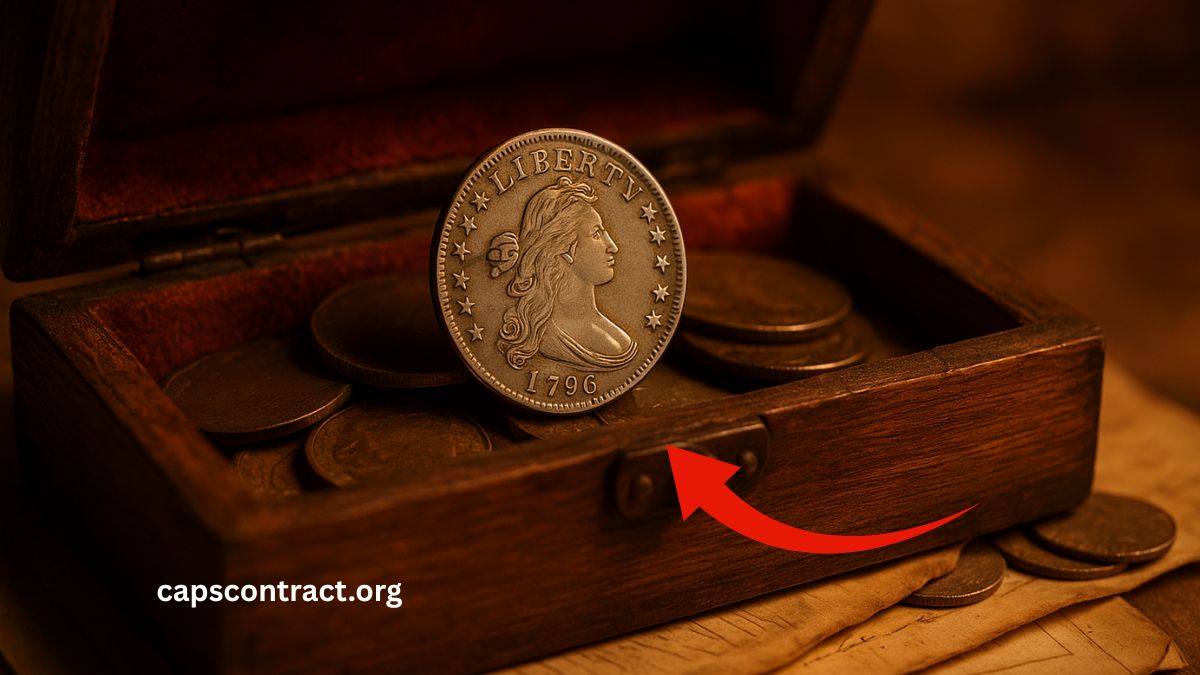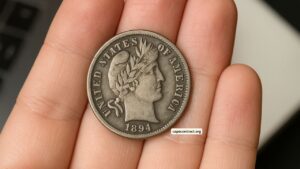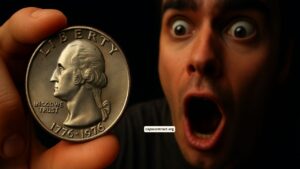A jaw-dropping discovery has rocked the numismatic world: a 1796 Draped Bust Quarter, valued at $6.813 million, was recently found tucked away in an antique coin chest by a retired collector.
This extraordinary find instantly became the talk of collectors and investors everywhere.
Key Details & Figures
| Feature | Detail |
|---|---|
| Year | 1796 (only year of issue for Draped Bust Quarter) |
| Reverse Design | Small eagle within a wreath, unique to this one-year type |
| Mintage | 6,146 coins produced (5,894 in 1796 + 252 in early 1797) |
| Surviving Estimate | Approximately 615 known today (≈10%) |
| Condition Rarity | Only a handful graded MS‑65 or above—MS‑67 graded sells for over $1.7M |
| Discovery Context | Hidden in an old antique chest by a retired collector; classed as a classic “hidden treasure” |
| Valuation | Fresh find valued at $6.813 million |
| Historical Importance | First U.S. quarter ever minted; only 18th-century quarter |
| Designer | Obverse by portraitist Stuarts’ influences, executed by Robert Scot |
Why It’s So Valuable
- First Year of Issue
- This quarter marks America’s debut in 25-cent coins, making it a highly coveted collector’s item .
- One-and-Done Design
- The small eagle reverse was used only in 1796, granting it singular historical importance.
- Extremely Low Mintage & Survival
- Just 6,146 produced, with around 615 likely to survive today.
- High-Grade Exception
- Coins in mint state are exceedingly rare; only a few in MS‑66 or MS‑67 exist, pushing auction prices into the millions.
- Fortuitous Discovery
- A retired collector stumbled upon this coin in an antique chest, igniting excitement and immediate media buzz.
Historical Context
- The Draped Bust design—showcasing Liberty with flowing hair—was created in 1795 by Robert Scot, becoming the standard for silver coinage until 1807.
- In 1796, silver denominations including quarter, dime, and quarter-eagle were all introduced, with the Draped Bust quarter being the only 18th-century quarter ever minted.
- Production halted after early 1797 until resumed in 1804 with a new heraldic eagle.
Market Comparisons
- A notable MS‑66 specimen sold for $1.74 million in 2022 .
- In 2022, a remarkable MS‑66 piece sold to GreatCollections for $2.35 million, a premium above the PCGS guide.
- But the freshly discovered chest coin, impressive in grade and provenance, now tops the scale at $6.813 million.
What’s Next for the Coin?
- It is expected to be brought to auction or sold privately, attracting elite collectors and museums.
- Certification by major grading services (PCGS or NGC) will be essential, along with authentication of its condition and pedigree.
- The sale could set a new record for early U.S. coins and spark increased interest in niche numismatic finds.
The $6.813 million 1796 Draped Bust Quarter isn’t just a coin—it’s a monumental piece of American history. With unparalleled rarity, grade, and an extraordinary discovery story, it sets a new benchmark in numismatics.
As it heads toward certification and eventual sale, the excitement among collectors and historians is palpable.
FAQs
Why is the 1796 quarter so rare?
Only 6,146 were minted, and it’s the exclusive quarter of the 18th century, making surviving coins exceptionally scarce.
What elevates its value to over $6 million?
Its mint condition, historical significance, and the remarkable story of being found hidden in an antique chest elevate its market value dramatically.
Where does this coin go next?
it’s likely to be graded and authenticated by PCGS or NGC, then auctioned or sold privately, making headlines in numismatic circles once again.



